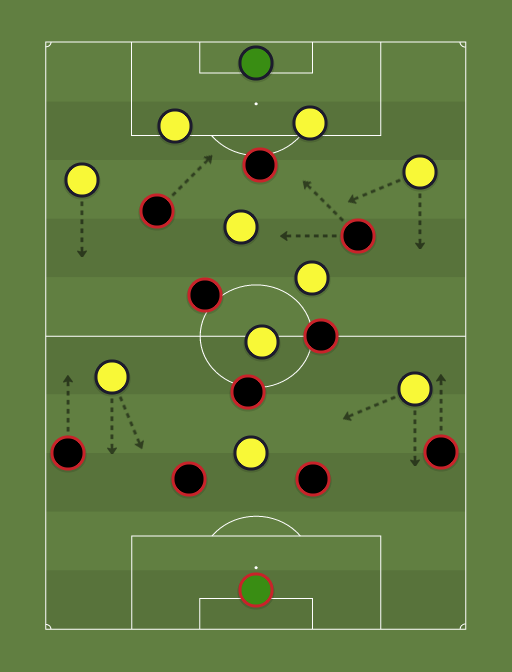While trying to find more videos on La Maquina to justify Labruna's role I came across this nice story, which I didn't know about before -
In 1949, ‘Il Grande Torino’ were regarded as one of the best teams in world football, as they were on the verge of winning their fourth consecutive Serie A title. However, whilst returning from a friendly match against Benfica in Lisbon, disaster struck. In poor weather conditions, the plane that the team and officials were travelling on crashed into the Basilica of Superga near Turin. There were no survivors.
Upon hearing the news of the tragedy, River Plate president Antonio Vespucio Liberti decided that his team should go to Italy in order to show solidarity with Torino, with the idea that a match between the two teams could also raise money for the victim’s families. Therefore, just 22 days after the tragedy on May 26 1949, River Plate played a friendly against a team representing the symbol of Torino, made up of a selection of the best players in the Italian league, the match finished 2-2.
Despite being over sixty years since Superga, River Plate and Torino still maintain a close affiliation, with Torino fans appreciative of River’s role in the healing process that was necessary after the disaster. In the Torino Museum in Grugliasco, a current River Plate shirt can be found, thus showing that the match between the two teams is still regarded as a significant fixture in the clubs history. The fact that Torino’s current away kit echoes the traditional diagonal sash shirt made famous by River Plate, is another way in which the affiliation continues in the present day.
The game even survived some footage, although its a very small highlights compilation, both Labruna and Di Stefano scored.
Edit: More details on that game -
Upon their arrival in Italy, Liberti was met with an emotional embrace on the runway from his Torino counterpart Ferruccio Novo, signalling the start of a unique friendship between the two clubs that remains as strong as ever today.
The game – against a Serie A select XI who played under the name ‘Torino Simbolo’ – took place on 26 May, three weeks after the disaster. River Plate’s star-studded side included Alfredo Di Stefano, while Juventus legend Giampiero Boniperti was among those who pulled on the granata jersey of his club’s city rivals. The symbolic Torino team was captained by Pietro Ferraris, the Grande Torino winger who had left the club the previous summer after winning four consecutive scudetti. A 2-2 draw seemed fitting on an emotional afternoon, but the gestures of solidarity went further.
Liberti also reportedly offered legendary River Plate forward Angel Labruna to Torino in an act of remarkable generosity, although the move never materialised. That offer may have taken place in June, when Torino’s president Novo – accompanied by legendary Italy forward Silvio Piola, who had played for Torino during the war – was invited to Buenos Aires to receive a special presentation from Evita Peron.
In the ensuing decades, the likes of Enzo Francescoli, Patricio Hernández and current Torino forward Maxi Lopez have turned out for both teams, but there is a more permanent, emblematic reminder of the gesture River Plate made that day in May 1949.
Since the 1950s, the two clubs have regularly used each other’s home colours for their respective away kits, and it is no coincidence that Boyé made his first Serie A appearance for Torino wearing a white shirt with a red sash running from shoulder to hip – the colours of River Plate. The kit he wore on the opening day in Milan has its roots in the appreciation of his former club’s commitment to fly across the Atlantic at a moment’s notice to pay tribute to Italy’s greatest-ever side and to offer help to a club in crisis.
67 years on, that act of solidarity and respect has not been forgotten. If Lucas Boyé fulfils his significant potential in the colours of Torino, the Granata faithful will have something else to thank River Plate for.


 sounds familiar. Always make or find the time to say what YOU want to say though.
sounds familiar. Always make or find the time to say what YOU want to say though.